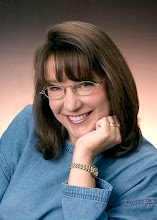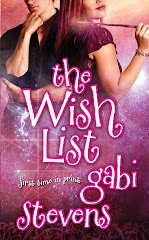A writer friend whom I see every year at a non-conference for writers in Red River, NM, just published a new book about New Mexico at the beginning of the last century. This is the real Wild West, folks. I've interviewed her and the results are here.
Q. My guest today is Velda Brotherton, and we're glad she could join us. Welcome, Velda. You have a new book coming out. Fly With The Mourning Dove. Could you tell us something about it?
A. Thank you for having me. My book tells the story of the life of a young girl who, at the age of6, accompanies her parents to a homestead in the high desert of New Mexico in 1920. Usingjournal entries by her mother and actual stories related by Edna, I've recreated her growing up years among some of the first Anglo settlers in New Mexico. Edna's father's bout withTuberculosis hangs over the family like the shadow of death, and several times separates herfrom her parents. She is sent to live first in a boarding house situated along the road from Taos Junction to Santa Fe, then to a convent where she feels caged, and finally to her grandparents inNorth Dakota. At the age of nine she returns home to stay, and so begins her love of the highdesert that will endure for a lifetime. She still owns a ranch there as well as one in Colorado.
Q. You're not from New Mexico. How did you get interested in writing this book?
A. My Dad was a storyteller, and as I grew up, he told about how my grandpa's brother was aMontana cowboy who came home from WW I to homestead in New Mexico. The stories were so gripping I never forgot them, and many years later when I went to Albuquerque to a writer'sconference, I contacted my mother's cousin, who was raised on that homestead, and went to visither. I stayed with her a week while she drove me all over her beloved high desert and showed me things I would never have seen as a tourist. She also told me stories that added to those my Dadhad told. My husband and I returned year after year to visit this tiny dynamo of a woman, untilwe too became enthralled with her land and the life she'd led. It was a book waiting to be written.
Q. So tell about some of her adventures.
A. Oh, Edna was quite an unusual girl for her time and so was her mother Cassie. While her husband, Edna's father, was away at war, Cassie went to nursing school. Her father had refused to let her do so when she lived at home, and she was determined no man would ever tell her howto live her life again. And though she and her husband Finas were close, she was the dominant partner in the marriage. After they moved to the homestead, which she was against from the outset, she continued to practice her nursing through the years. Edna must have inherited some ofher mother's stubbornness, for when her parents sent her to live in a convent while her fatherwent to Fort Bayard to be treated for TB, she caused quite a ruckus among the nuns. Then later on, when she was grown, she attended a party where she refused to dance with Tony Lujan, avery high ranked Tewa Indian who was married to the notorious Mable Dodge. She also was mixed up in some political wrangling, which was common in New Mexico at that time. Her mother and father had some very strong opinions of Long John Dunn, a famous and controversial figure among Anglo settlers in New Mexico.
Q. Sounds like a wonderful book. What made you decide to write her story as creative nonfiction, rather than historical fiction?
A. The more stories Edna related, and by now she was writing them down and sending them to me, the more I realized that the only way I could tell her story and be true to how she had lived, was to write it as nonfiction. But I didn't want to record a bunch of dry facts, so I began to study the art of creative nonfiction. I found the best information online posted by Lee Gutkind, who is considered the godfather of creative nonfiction. It turned out I had already written a creative nonfiction book, I just didn't realize it. My first book, Wandering In The Shadows of Time, which was published in 1994, fit the rules of this genre perfectly. When I wrote it, all I knew was that I had to tell the story of the people I interviewed in a special way, by inserting myself into the stories and taking the reader along with me as I did so.
Q. Is that book still available?
A. Yes, at Amazon.com or it can be ordered from any bookstore.
Q. Okay, that's great. Now back to Edna's story. Wouldn't you have been able to expand more on her story if you'd written it as historical fiction?
A. Yes, but then it wouldn't really have been her story. She talked to me about writing her storyfor a couple of years before I began to get serious about it, and I knew how she felt about it being told like it really happened. Funny, once when she was reading one of my historical fiction romances, she read them all but skipped the "sexy parts ”, she told me she hoped that when I decided to write her story it wouldn't be a romance because there was too much fiction and not enough truth in the books. And she's right. No matter how hard we try, historical fiction, from necessity, stretches a lot of the truth all out of proportion.
Q. So, even when you wrote dialogue and internalization, you were telling the truth?
A. I must have been, because when I sent her the last draft of the book, she sent it back with apost-it stuck to the title page. It said, very succinctly, "I'm satisfied." You have to know Edna to realize what a compliment this was. At that point all she cared about was the book being published before she died, and would I make sure her children and grandchildren all got a copy?
Q. How old is she?
A. She's a very young 92, coming up on a birthday in July. She took her last horseback ride over the sagebrush flats at the age of 85 and only stopped hiking in the desert in her late 80s. She stopped driving at 90, but is still ready to go anytime visitors will take her. Often she wants to go down to Tusas, the ranch in New Mexico where she spent so much of her life. We're always happy to take her and spend some tranquil time living in her past. She would live there, except it's so remote and there's no electricity or running water, so her family won't permit it. After having written the book, I feel as if I grew up with her, and I never read the ending without crying, though I've read it over and over. Not because it's sad, but because her life has been sobeautiful, so complete and so satisfying. Would that mine can be the same.
Q. How do we get a copy of Fly With The Mourning Dove?
A. It's available online at Amazon and Barnes & Noble, or you can order it from PublishAmerica or any bookstore in the country. If you want to read an excerpt from the book, check out my website.
Q. Thank you so much for joining me. Would you share your websites and any other presence onthe web?
A. Thank you for having me. I enjoyed it.http://www.authorsden.com/veldabrothertonveldabrotherton.blogspot.com
www.historylady.gather.com
--Gabi
What I'm reading now:
The Secret History of the Pink Carnation by Lauren Willig (what fun)
Mr. Darcy takes a Wife by Linda Berdoll
The Adventures of Tom Sawyer (Yup, still teaching it)
The Adventures of Hucklberry Finn (Yup, still teaching this one, too--and you try to say Huck Finn to a group of eighth graders and not worry about mixing intial letters--Ack!)
Monday, February 19, 2007
Saturday, February 03, 2007
Life, what a concept...
Since last I wrote, I won one writing contest, and have finaled in another. So I guess it's not the writing that's keeping me from being published again. It's the production. My advice to would be writers--don't get a day job. Ahh, but it's a vicious cycle, because one does need money to live, so one works but then one can't devote the time one would want to the craft.
Never mind. The writing is coming along. Only it's in the form of a professional development dossier so that I can earn more money as a teacher next year. So far, forty pages of the driest jargon one could read. And worse, the powers that be force me to use incorrect style. The dossier is neither formal nor informal. It all grates on this language arts and literature teacher/ novelist.
Selling my soul for my daughters' college education,
--Gabi
Books I'm reading now:
six books I'm judging for the RITA, which shall remain unnamed because I do not wish to sully the reputation of this great contest
FairyDust and the Quest for the Egg by Gail Carson Levine (reading it aloud for my youngest daughter)
The Landlord's Black-Eyed Daughter by Mary Ellen Dennis, a galley I'm reading to give a quote for
The Adventure of Huckleberry Finn by Mark Twain (Yup, I'm teaching it again)
The Adventures of Tom Sawyer (Hey, I've got a seventh grade class this year too)
Never mind. The writing is coming along. Only it's in the form of a professional development dossier so that I can earn more money as a teacher next year. So far, forty pages of the driest jargon one could read. And worse, the powers that be force me to use incorrect style. The dossier is neither formal nor informal. It all grates on this language arts and literature teacher/ novelist.
Selling my soul for my daughters' college education,
--Gabi
Books I'm reading now:
six books I'm judging for the RITA, which shall remain unnamed because I do not wish to sully the reputation of this great contest
FairyDust and the Quest for the Egg by Gail Carson Levine (reading it aloud for my youngest daughter)
The Landlord's Black-Eyed Daughter by Mary Ellen Dennis, a galley I'm reading to give a quote for
The Adventure of Huckleberry Finn by Mark Twain (Yup, I'm teaching it again)
The Adventures of Tom Sawyer (Hey, I've got a seventh grade class this year too)
Subscribe to:
Posts (Atom)

